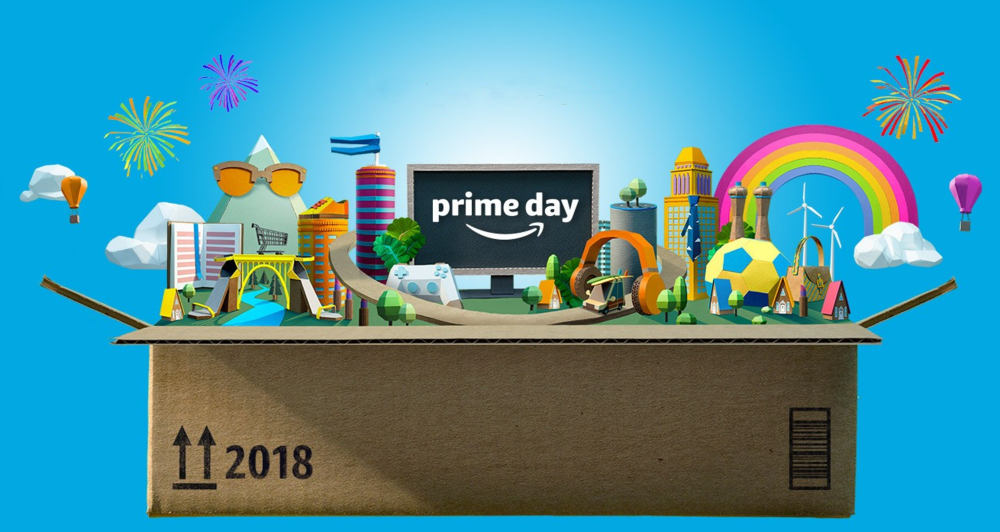

(Photo: Square one via Oxford Properties)
By Mario Toneguzzi
Retailers are experiencing operational and execution challenges in their pursuit of ecommerce which have both disappointed consumers and increased costs to the retailers, according to a new report by HRC Retail Advisory.
The company’s Omni-Channel Inventory Management Study found that 80 per cent of study participants – senior executives at 30 North American retail chains – offer some omni-channel capabilities.
“Brick-and-mortar retailers have overextended themselves as they’ve tried to leverage their physical store fleets,” said Antony Karabus, CEO of HRC Retail Advisory. “E-commerce and omni-channel fulfillment and high e-commerce returns have led to sharply rising freight costs and product margin challenges.






PHOTO: AMI PERSPECTIVA
“Meanwhile, consumers expect ever faster delivery, pressuring retailers to meet those expectations to remain competitive. Very few retailers have formal scorecards to measure the performance and profitability of their omni-channel efforts, which often means they can’t effectively and rapidly take the corrective action needed to improve both customer service and profitability.”
For the most part, e-commerce sales by brick and mortar stores are transfers essentially from their brick and mortar locations.
“Brick and mortar sales, comp sales, are dropping one, two, three per cent and their online sales are going up 10 to 40 per cent, depending on the maturity of their e-commerce operation. Because online sales in Canada are still a very small percentage, typically high single digits, low double digits, so if you’re getting a 30 per cent increase in online sales it equates to a three per cent decline in brick and mortar sales,” said Karabus.
“For the vast majority of retailers, what’s happening is you’re getting significant increases in e-commerce sales and small ongoing declines in store level sales. And you’re ending up in about the same position you were before in total sales. It’s just a different composition. Slightly more weighted away from brick and mortar toward e-commerce. The result of that is it’s causing significant pressure on the retailer earnings because of the free shipping, free returns, the high cost of digital marketing and other costs to enable e-commerce capabilities.”


Photo: Kate Kiscox


Other key highlights from the study include:
● Buy or reserve online, pick up in-store (BOPIS/ROPIS) is not consistently reliable, as systems often tell shoppers that an item is available in a specific store when the store does not actually have it in stock. In fact, 66 per cent of retailers said that the reliability of BOPIS/ROPIS is inconsistent due to retailer inventory inaccuracies. Due to the inventory accuracy issue, 84 per cent of retailers only reflect online that items are available in a store for BOPIS/ROPIS if the system shows that there are multiple units of the applicable item on hand for that store to minimize the risk of disappointing customers;
● Inefficiencies in shipping online orders are causing delays, as 77 per cent of retailers ship primarily from e-commerce fulfillment centres instead of from local stores that may be closer to customers’ homes or offices, which would allow customers to receive their orders more quickly. These retailers only use local stores as a backup when the e-commerce fulfillment centre is out of stock, even though using store-level inventory is often a better option to fulfill customer orders more quickly and provides the dual benefit to the retailer of reducing overstocked inventory in those stores, which would avoid future markdowns for those items;
● Nearly 70 per cent of retailers are not optimizing their customer order systems to prioritize filling the entire order from one location, causing split shipments and increasing freight costs. As a result, there is a higher likelihood of a customer receiving their order in multiple boxes, which creates both a negative consumer experience and higher freight costs for the retailer;
● Almost 80 per cent of retailers are not effectively allocating inventory to local stores based on customer demand from that specific location.; and
● Only 14 per cent of retailers surveyed are using predictive analytics, and most of these retailers are struggling to figure out how to integrate such analytics into operational processes. Most of these retailers are using predictive analytics to support decision-making in a narrow function, such as determining which store to fulfill an online order from or to enhance new product testing. A further 10 per cent of retailers had initiated the use of these tools but subsequently discontinued use of the technology due to operational/process challenges and unclear benefit cases. Only 14 per cent of retailers formally consider the work required to fulfill in-store omni-channel activities in staffing their stores.


Photo: Kate Kiscox


“Retailers have to find some way to fight back against Amazon and one of the best ways to fight back is omni-channel,” said Karabus, adding that the retail initiative is both a defensive mechanism as well as an offensive mechanism in the battle for the retail dollar.
“The key message for retailers is you have to do omni-channel at some point in the not-too-distant future otherwise known as click and collect. You have to be able to do it. But don’t rush into it. Plan properly. Plan carefully . . . It’s not easy but it’s going to be mandatory to fight against Amazon and to satisfy the new desires and expectations of consumers. You don’t have a choice. It’s a question of when not if.”
Having worked with numerous U.S. retailers, HRC Advisory has developed six key recommendations for retailers. Karabus said retailers have to make sure these six things are done right:
1. Offer the omni-channel capabilities that are most important to your customer. Determine the desired customer experience (ability for customers to order, pick up and return their orders anywhere) and prioritize the investments to enable the most important capabilities based on both improving customer experience and retailer profitability;
2. Assess Inventory Accuracy. Identify and address foundational barriers and issues impacting inventory accuracy through organizational, process and systems enhancements;


3. Integrate Inventory Across Channels on a Timely Basis. Identify and eliminate barriers that prevent all inventory from being accessed, shared and leveraged on a timely basis, such as ensuring product that is available for sale in physical stores is also available on the website on a timely basis to meet customer needs and to optimize inventory productivity and profitability;
4. Develop Success Metrics and Omni-Channel Scorecard. Define performance and execution success measures at the outset given the increased complexity of omni-channel capabilities and the need to maintain profitability;
5. Redefine the Role of the Store in Enabling Omni-Channel. Identify and address the impact to store-level roles, compensation, order-picking, packaging and fulfillment; and
6. Increase Sales through Proactive Add-On Selling Efforts. Develop formal add-on selling practices and leverage data to augment customer service efforts at the time of customer pick-up and/or returns.
For more information on HRC Retail Advisory, please visit www.hrcadvisory.com.


Mario Toneguzzi, based in Calgary has 37 years of experience as a daily newspaper writer, columnist and editor. He worked for 35 years at the Calgary Herald covering sports, crime, politics, health, city and breaking news, and business. For 12 years as a business writer, his main beats were commercial and residential real estate, retail, small business and general economic news. He nows works on his own as a freelance writer and consultant in communications and media relations/training. Email: mdtoneguzzi@gmail.com










![World’s 1st VUSE Storefront Opens in Downtown Toronto [Photos]](https://images.squarespace-cdn.com/content/v1/529fc0c0e4b088b079c3fb6d/1600809478182-51W99YAKSS061WZZZEA4/ke17ZwdGBToddI8pDm48kGhF2FCaXCFJZFEalRo8kqUUqsxRUqqbr1mOJYKfIPR7LoDQ9mXPOjoJoqy81S2I8N_N4V1vUb5AoIIIbLZhVYxCRW4BPu10St3TBAUQYVKc-1xO4ojbyXh6pGHoSehGwJrj31ldwyDpM9XrZmSoQV1hiaei2FKmHe5-h9rSbF7s/Screen%2BShot%2B2020-09-22%2Bat%2B5.03.35%2BPM.jpg)





